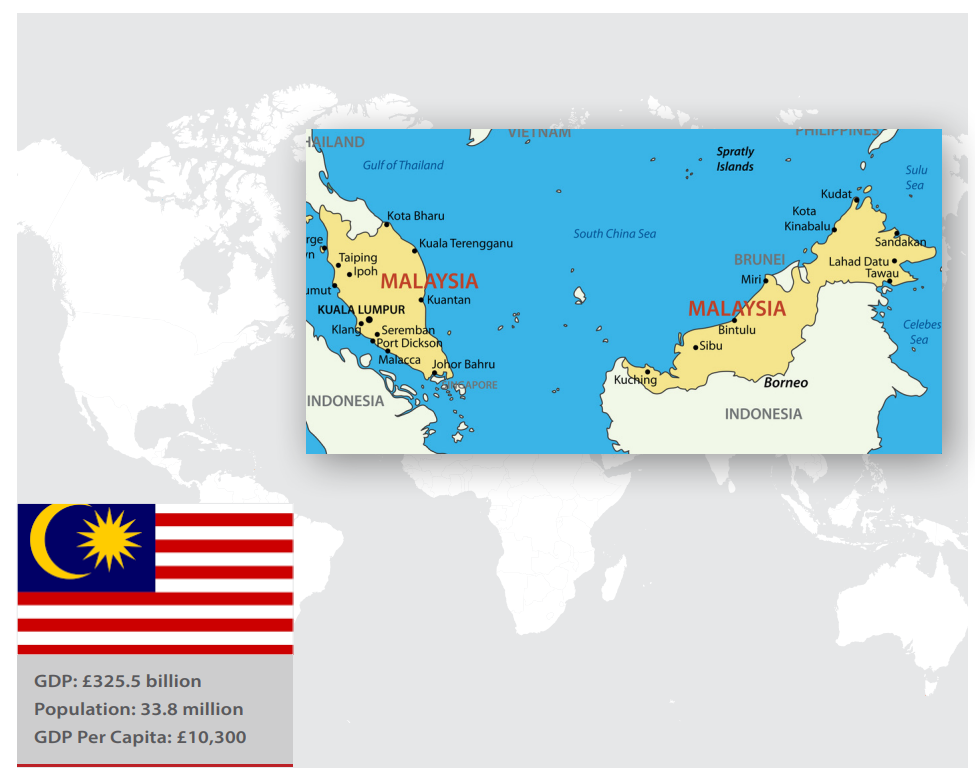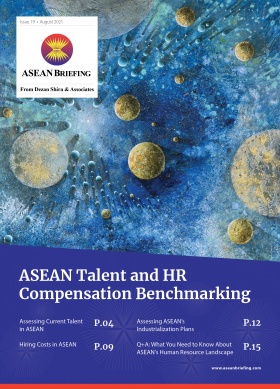2023 Investment Opportunities in Malaysia
Following where China has been spending and investing its Belt & Road Initiative capital can provide FDI clues and reveal new opportunities in recipient countries. As infrastructure builds start to yield productive user cashflows and the need for subsequent support services arises, case studies for investment potential become apparent. In this new series, we will be examining where China has spent its money and where returns on investment exist for foreign investors in piggybacking onto opportunities created by the BRI build.
Malaysia has been a consistent recipient of Chinese investment for some time, and its geostrategic position has made it a hub for many red-chip Chinese investors. This, coupled with extensive Southeast Asian rail connectivity plans and the development of numerous free trade zones is seeing Malaysia take on a more dynamic role in the region than in the past.
Both light manufacturing zones and a nationwide digitization program are seeing Chinese investments made in conjunction with the China-ASEAN Free Trade Agreement and the recent RCEP agreement – Malaysia is a member of both ASEAN and RCEP and shows how both China and Malaysia have been combining development with free trade and developing the countries manufacturing to allow it to become a China alternative.
Background
China remains Malaysia’s largest foreign investor in the manufacturing sector and has been since 2016, in addition to being Malaysia’s largest trading partner since 2009. China accounted for 18.6% of Malaysia’s total trade in 2020, while Malaysian exports to China recorded a new high in 2020, expanding by 11.1 percent to US$37.77 billion. Bilateral trade reached US$176.8 billion in 2021.
Renowned Chinese companies Huawei Technologies Co Ltd, Longi Solar Technology Co Ltd, JinkoSolar Holding Co Ltd, Alliance Steel, Alibaba Group Holding Ltd, Zhejiang Geely Holding Group Co Ltd, and Xiamen University have chosen Malaysia as their preferred investment destination, partially due to the China-ASEAN free trade agreement which came into effect a decade ago and significantly reduced or eliminated tariffs on most traded goods and services.
Infrastructure
The East Coast Rail Link (ECRL) – is the largest economic and trade project between China (CCCC) and Malaysia and links the east coast with the west. ECRL construction works were suspended in 2018, then COVID, then restructuring (2020) finally both parties signed a revised deal in 2021, where the line increased from 640 km to 665 km; the cost burden increased to US$12.1 billion. The ECRL is now expected to be completed in 2028.
The Batang Saribas Bridge – In January 2021, China State Construction Group (CSCEC) successfully won the bid for the US$193 million project, one of the 11 major bridges which are being constructed and are scheduled to be ready by 2025 as the first of the three components of the Sarawak Coastal Road project. The Saribas Bridge project is also one of Southeast Asia’s longest main span bridges.
The MCKIP SEZ – In November 2021, Beibu Port Group announced that the Malaysia-China Kuantan Industrial Park (MCKIP) received a US$2.74 billion investment that primarily consists of coke, electric, aluminum, and manganese. This represents the largest investment MCKIP has ever received and a step change from the original US$4.8 billion investment in October 2020.
Regional logistics hub
In November 2021, Alibaba chose Malaysia as its the Asia Pacific preferred air cargo hub with the operation of Cainiao (Alibaba) Aeropolis eWTP (electronic World Trade Platform) Hub. The launch resulted from the eWTP partnership between the Malaysian government and the Alibaba Group, with the establishment of a JV company between Malaysia Airports Holdings Bhd and Alibaba Group. The hub will transform Malaysia into a regional distribution center for e-commerce and is expected to generate a cumulative GDP of US$1 billion over the next 10 years and support over 35,000 jobs. The eWTP Hub has been in operation since November 2020. The Malaysia Airports chairman said its aim is to gain leadership in e-commerce logistics and establish Kuala Lumpur International Airport (KLIA) as a preferred regional distribution hub within the Asia Pacific.
Other investments
- Ant Financial formed a JV with CIMB, Malaysia’s 2nd largest bank, to provide e-wallet and other online payment services called Touch n’ Go (TNG). In 2021, AIA (Hong Kong) took a stake that valued TNG at circa US$700 million.
- Tencent – in Q1 2019, Tencent launched its first WeChat Pay app in a foreign currency (Malaysia) as an e-wallet service. By April 2021, WeChat pay ranked 5th among the 53 Malaysian e-wallet providers.
- In January 2021, Alibaba Cloud announced that it is to launch an Alibaba Cloud Innovation Centre in Malaysia in which it plans to train 30,000 local professionals in 2022.
- In addition to announcing the innovation center, Alibaba Cloud will also invest US$1 billion in funding and resources within the next three years as part of its Project AsiaForward, which aims to foster one million digital talents, empower 100,000 developers, and accelerate the growth of 100,000 tech start-ups across Southeast Asia and Hong Kong.
- In smartphones, in Q2 2021, Xiaomi ranked No. 1 in Malaysia
Renewables
In December 2021, Malaysia and Shanxi Construction Investment Group signed an MoU to collaborate on the production of second-generation biodiesel and biojet fuel. Shanxi Construction plans to invest in a hydrogenated vegetable oil (HVO) plant, which has the potential to produce Sustainable Aviation Fuels (biojet). Each HVO plant is expected to bring foreign investment worth US$712.25 million and create nearly 800 jobs.
Looking ahead
Malaysia’s economy is on an upwards track to recovery from the pandemic following a successful vaccination drive and the full withdrawal of movement restrictions. The economy is projected to expand 5.5 percent in 2022, driven mainly by a strong rebound in consumption. According to the World Bank, Malaysia is a middle-income country and is expected to rise to high-income status by 2030.
Malaysia Investment Intelligence
Readers may use the ASEAN Briefing search function at the top of the homepage to find more Malaysian intelligence. Just type ‘Malaysia’ into the subject box. We also provide investment assistance and research into Malaysia, please contact us at asia@dezshira.com for assistance.
About Us
ASEAN Briefing is produced by Dezan Shira & Associates. The firm assists foreign investors throughout Asia and maintains offices throughout ASEAN, including in Singapore, Hanoi, Ho Chi Minh City, and Da Nang in Vietnam, Munich, and Esen in Germany, Boston, and Salt Lake City in the United States, Milan, Conegliano, and Udine in Italy, in addition to Jakarta, and Batam in Indonesia. We also have partner firms in Malaysia, Bangladesh, the Philippines, and Thailand as well as our practices in China and India. Please contact us at asia@dezshira.com or visit our website at www.dezshira.com.








